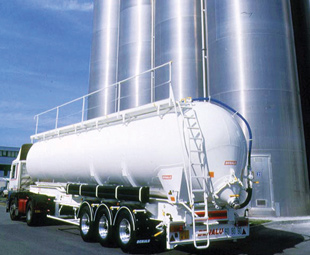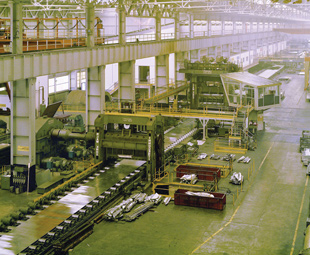Aluminium school fees

The production and application of aluminium has changed significantly during the last 20 years. Designers and fabricators have learned difficult lessons about the ways in which the metal should – and shouldn’t – be used. FOCUS examines some of them.
Combining high strength-per-unit mass, corrosion resistance and formability, aluminium is a remarkable material with wear characteristics that compare favourably with mild steels. Yet, as Aluminium Federation South Africa (AFSA) aluminium specialist, Dr Tony Paterson, says, “It is not a wonder material; no material is. Each has its own strengths and weaknesses. Designers and other decision makers seek to exploit the benefits of any engineering material or combination of engineering materials to the best possible advantage.”
The commercial exploitation of aluminium began in 1886. The metal was first used structurally in commercial transport shortly after the First World War. The 1930s saw aluminium introduced to aircraft engineering, where its strength and durability continue to be valued. According to Paterson, however, the combination of the welded steel Liberty ships and the Comet aeroplane experiences of the 1950s focussed attention on durability issues related to cyclic loads, commonly called fatigue. Until then fatigue had not been fully understood. Since then, the science of fracture mechanics has continued to work on addressing the complex challenges of fatigue design inherent in the use of materials in ever more demanding applications, including commercial transport applications.
South Africa’s aluminium industry was entirely import-based until the late 1940s, when a small rolling mill was established in Pietermaritzburg. The use of the metal in the road transport industry began in the 1950s with aluminium tippers, followed by the development of aluminium petrol tankers in the early 1980s. As Paterson points out, the metal’s non-corroding properties ensured fuel cleanliness; the high strength to mass characteristics meant that petrol tankers could increase their payloads; and the relatively low melting point of aluminium actually reduced the risks associated with explosions in the event of fire. As a result, all fuel tankers are now made from aluminium. The metal’s durability has also proved advantageous in coastal operations, where vehicles fabricated from aluminium can operate continuously without needing to be periodically stripped and recoated to avoid corrosion.
Consequently, the use of aluminium in commercial transport has spread beyond tippers and fuel tankers to other bulk tankers, volume vans and drop-side rigid bodies amongst others. Although the success of these applications has varied, Paterson believes that the most notable successes have been driven by manufacturing companies and transport operators whose interest in the metal has been well-informed rather than opportunistic. As with any change there are school fees to be paid.
According to Paterson, a trend towards designing lighter fuel tankers at the risk of compromising durability is a case in point. “While I agree with the view of using material appropriately, I have reservations about expecting any material subjected to cyclic (fatigue) loads not to crack in time,” he explains.
 Paterson goes on to point out that, while it is true that older designs were more conservative and about 10% heavier – with obvious implications for payload – operators have had to learn how to balance commercial interests against the fatigue-related suitability of a tanker’s design for actual operating circumstances. This means that some designs suitable for an urban environment are too light for rural applications. The results of AFSA research into the stresses related to the same loaded trailer towed along highways, provincial roads and gravel roads show that both the stress and the number of cycles are three times greater on gravel roads than on highways. The fatigue loading is higher on gravel roads. This has obvious durability implications.
Paterson goes on to point out that, while it is true that older designs were more conservative and about 10% heavier – with obvious implications for payload – operators have had to learn how to balance commercial interests against the fatigue-related suitability of a tanker’s design for actual operating circumstances. This means that some designs suitable for an urban environment are too light for rural applications. The results of AFSA research into the stresses related to the same loaded trailer towed along highways, provincial roads and gravel roads show that both the stress and the number of cycles are three times greater on gravel roads than on highways. The fatigue loading is higher on gravel roads. This has obvious durability implications.
Aluminium is less forgiving than mild steel. More care has to be taken with fabrication. If used appropriately, its high strength-per-unit mass and corrosion resistance compensate for this. In Paterson’s view, it is a mistake to assume that the increasingly higher-strength steels now in use have the same properties as mild steel, but are simply more durable. “One has to understand the advantages and disadvantages in a specific application of any material down to grade or alloy level,” he maintains. Aluminium is more sensitive to fabrication errors and is 2.5 times more sensitive to fatigue loading than are mild metals. This has implications for highly stressed joints.
As road transport operating circumstances and conditions have changed over the years so, too, have aluminium fabrication technologies and techniques. By way of example, the introduction of welding machines has meant that the skills of the welder have been largely superceded by the sophistication of the welding machine. So, while some skills have been eroded others have been developed. Nevertheless, Paterson maintains that, because aluminium is difficult to fill, the accuracy of the pre welding fabrication process remains paramount. Modern synergic pulse welding machines may well reduce the need for skilled welders, but in aluminium, fabrication specific joints still require their input. Designers need to bear this in mind so that manufacturing manpower can be trained and allocated accordingly, and information shared on lessons learned.
In the trial and error world of engineering, it is important to learn from mistakes and move on to greater heights. According to Paterson, the well-known Liberty ships failure cited earlier tested engineering theory on fatigue and brittle transition in steel design and fabrication; the Comet failure tested engineering theory on fatigue in aluminium. But these failures did not prompt a return to timber structures for either ships or aeroplanes. The designers of the Liberty Ship and Comet did not say, “If only …”; instead they said, “Next time …”.
Paterson believes that, in South Africa, too little attention is given to understanding why some applications fail. “In simple terms when a steel design fails, the designer is blamed; when aluminium fails the material is blamed,” he asserts. Instead, the failure itself should be carefully examined and evaluated so that important lessons can be learned.
Published by
Focus on Transport
focusmagsa




